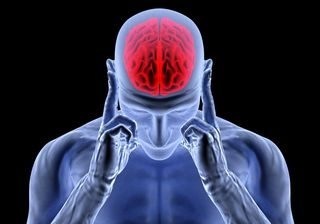Buzzing with emotion

This article has been updated with the insertion of instructional video clips. This may enhance the value of the subject specifically as regards psychotherapists, coaches and those interested in the current understanding of the mind-body interface.
For years the treatment of choice for managing depression and most mood disorders has been anti-depressant serotonin-enhancing agents, more recently the SSRI’s (selective serotonin re-uptake inhibitors). Increasing serotonin has been the common chemical route for improving depression. Some worrying newer evidence however suggests that increasing serotonin may decrease dopamine levels, where dopamine is the mediating neurotransmitter for the brain’s seat of pleasure and gratification. Unfortunately ‘depression’ as an entity remains undefined. At best it is an amorphous collection of symptoms which has been coded in the psychiatric bible, the DSM. It is a debilitating condition and only partially responds to the SSRI’s. In fact they’re not that much more effective than the placebo effect, although the anxiety component is effectively dealt with. Fortunately we are making great strides in understanding the core dynamics underpinning emotion.
Emerging out of the mist appears to be two main players determining our emotional function. The two defined emotional centres of the brain are the amygdala and the nucleus accumbens. The amygdala is the seat of anxiety, panic and, when it is activated sufficiently, anger/rage. It also plays a major role in emotional memory. The nucleus accumbens is the seat of gratification, pleasure and motivation and is dopamine–driven. Studies have shown that the amygdala and the nucleus accumbens mutually oppose each other in terms of function. Thus when anxiety or anger prevail, the nucleus accumbens is suppressed. Conversely when the nucleus accumbens is activated and gratification and purposeful motivation are maintained, the anxiety and anger of the amygdala is diminished. I would further propose that most of the other emotions are derived from the interplay of these two defined emotional centres. The activation of the nucleus accumbens and thereby the enhancement of gratification and purposeful motivation is vital, because lack of gratification and purpose may be the core components of depression. I have defined this state as ‘hopeless-helpless’.
The amygdala and nucleus accumbens are integrated in the nurture period. In situations of deprivation, which notably includes delay in appeasing needs such as hunger, the amygdala will become highly activated. This establishes the fear foundation. On appeasing needs, the nucleus accumbens becomes activated, a dopamine spurt occurs with gratification and importantly, the amygdala is suppressed. The degree of delay in getting needs met and the effectiveness that needs are indeed met will establish the unique individual belief configuration in regard to fear and reward. This forms the intrinsic bias for the duration of life unless mediated through intervention.
The dynamic interaction of the amygdala and the nucleus accumbens was illustrated in a co-operative study undertaken by a group of neurosurgeons and psychiatrists in Germany and in the US. Eight severely depressed (terminally hopeless-helpless) people who were nonresponsive to medication and even electroconvulsive therapy, and who were essentially pre-suicidal, underwent prolonged deep-brain stimulation of their nucleus accumbens. Over a period of three to six months there were significant increases in gratification levels. The result was that medication dosages could be significantly reduced. Interestingly, anxiety levels were also noted to be significantly diminished and this was shown to correlate with ‘quiet’ amygdalae as seen on PET scanning (The PET scanner measures active brain function). In a later study, the stimulation of the amygdala resulted in the quietening of the nucleus accumbens. This manifested as anxious individuals with compromised levels of gratification and motivation.
The quietening of the amygdala has come to be recognized as a critical objective. The chronically activated amygdala spews out adrenaline, noradrenaline and cortisol. Unfortunately for us, the amygdala is in turn stimulated by the very chemicals that it secretes. This therefore has the effect of keeping us ‘locked-in’ to an anxiety-panic-rage state. From here, really nasty things happen:
· The raised adrenaline-noradrenaline mix, stimulates inflammatory mediators in the whole body (Lowered levels of serotonin and dopamine are also associated with raised levels of inflammatory mediators). This sets us up for cardiac disease, neuro-degenerative conditions (Alzheimer’s, motor neuron disease, Parkinson’s disease) and cancer
· The raised cortisol suppresses our immunity, setting us up for infections and tumors
· Raised cortisol in pregnant women crosses the placenta and compromises pre-frontal cortical neuron maturation and subsequent IQ of the newborn. It also sensitizes the amygdalae of the unborn child giving rise to the birth of fearful infants (compromised EQ)
· Raised cortisol together with raised inflammatory mediators wreak damage upon our hippocampi – the structures which mediates short-term memory. Hence short-term memory becomes compromised
· Raised adrenaline-noradrenaline compromises the function of the pre-frontal cortex in the adult which is the seat of our sense of reason – the very function that we need to neutralize this destructive chemical wrecking-ball.
· Raised levels of inflammatory mediators permeate the brain and further compromise the levels of serotonin and dopamine in the brain thus locking us into a self-perpetuating cycle of hopeless-helpless
Fortunately all is not lost. For twenty five years I have been researching this complicated dynamic and developing a comprehensive program designed to empower the user to transcend this compromised state and to attain and sustain a productive and gratifying space. The result is neuromodulation – a cognitive application engaging directly with the underpinning neurophysiology. The comprehensive program incorporates multiple applications in the clinical and corporate environments and is fully quantifiable by means of an online psychometric. For further information see www.neuronostic.com or contact me at nsurge2@gmail.com
The following two video clips (parts 1 and 2, in sequence) describe the chemistry underpinning wellness, performance and leadership.
References available on request
Copyright reserved – Ian Weinberg 2017
Articles from Ian Weinberg
View blog
Is happiness a state which occurs when there’s no sadness or are happiness and sadness two primary p ...

As I pen this missive I am acutely aware of the global shutdown of daily life to which we have becom ...

Under a November Full Moon · It happened upon us, a design bereft of our choice. · Thence have we tr ...
Related professionals
You may be interested in these jobs
-

Human Capital Business Partner
Found in: beBee S2 ZA - 20 hours ago
The Johannesburg Development Agency Gauteng, Johannesburg, South Africa Full timeThe Johannesburg Development Agency's job vacancy, Career and Recruitment · Job title : Human Capital Business Partner (D1) jobs in Gauteng · Job Location : Gauteng, Johannesburg · Deadline : April 26, 2024 · Quick Recommended Links · Jobs by Location · Job by industries · PURPO ...
-

Account Manager
Found in: Talent ZA C2 - 6 days ago
Tower Group Cape Town, South Africa Full timeDepartment : Sales · Reports To : Sales Manager · Job Grade : C2 · Location : Cape Town, Airport Industrial · ROLE PURPOSE · To market and sell all our company products and services to new and cross sell and upsell to existing clients in order to achieve agreed sales and servic ...
-
DMLT Senior Technical Consultant
Found in: beBee S2 ZA - 2 days ago
SAP Not specified, Johannesburg, South Africa Full timeSAP's job vacancy, Career and Recruitment · Job title : SAP DMLT Senior Technical Consultant jobs in Not specified · Job Location : Not specified, Johannesburg · Deadline : April 28, 2024 · Quick Recommended Links · Jobs by Location · Job by industries · Main tasks would be: · B ...


Comments
Ian Weinberg
7 years ago #16
Just re-read your comments Gerald Hecht Real gems! Had a great, hearty, African belly laugh. Anyway, got to run off again now to do another frontal lobotomy ...or is that a bottle in front of me? Things get a little confusing at this stage of life.
Ian Weinberg
7 years ago #15
Yes absolutely Gerald Hecht Partake generously of the foliage of Eden and dance with the flow of the delicious right hemisphere. But from time to time, just pop over to the left hemisphere and pay the bills!
Ian Weinberg
7 years ago #14
Yes absolutely Gerald Hecht Partake generously in the foliage of Eden and dance with the flow of the delicious right hemisphere. But from time to time, just pop over to the left hemisphere and pay the bills!
Ian Weinberg
7 years ago #13
Thanks for that Savvy Raj
Ian Weinberg
7 years ago #12
Great idea - think I'll knock back some kava kava brew before my next workshop. Should create some new Hebb thingies!
Ian Weinberg
7 years ago #11
Sara Jacobovici Thanks for the kind words and the feedback.
Sara Jacobovici
7 years ago #10
CityVP Manjit
7 years ago #9
Joyce 🐝 Bowen Brand Ambassador @ beBee
7 years ago #8
Ian Weinberg
7 years ago #7
Ian Weinberg
7 years ago #6
Apologies Pamela \ud83d\udc1d Williams I seem to have digressed and missed the important point that you raised: Yes absolutely. The presence of your father may well have created a stressed, high cortisol milieu in your pregnant mom which may have sensitized the amygdala of the unborn fetus. The introvertedness which subsequently developed in the child/adult could well reflect a heritage of fear and defensiveness. Thanks again for that shared info.
Ian Weinberg
7 years ago #5
Oh, and thanks for the compliment. Appreciated.
Ian Weinberg
7 years ago #4
Good on you Gerry! But it's never too late. If you're able to get funding for pro-inflammatory assaying we could put together a little study. Even throw in my online questionnaire. We could end up with a sustaining dopamine storm ...
Ian Weinberg
7 years ago #3
Thanks for sharing that Pamela \ud83d\udc1d Williams Interestingly, I didn't even go into the subject of epigenetics. In epigenetics research it's been shown that the lifestyle and habits of an individual can alter what the DNA expresses and suppresses. The big rub of course is that the altered DNA is passed on to the progeny. It is therefore of great significance that in a study published last week, it was shown that the sons (but not daughters!) of cocaine-addicted fathers, have poor short term memory! We're only just beginning to scratch the surface of this very important new dimension of neuropsychology.
Ian Weinberg
7 years ago #2
Thanks very much \ud83d\udc1d Fatima Williams
🐝 Fatima G. Williams
7 years ago #1